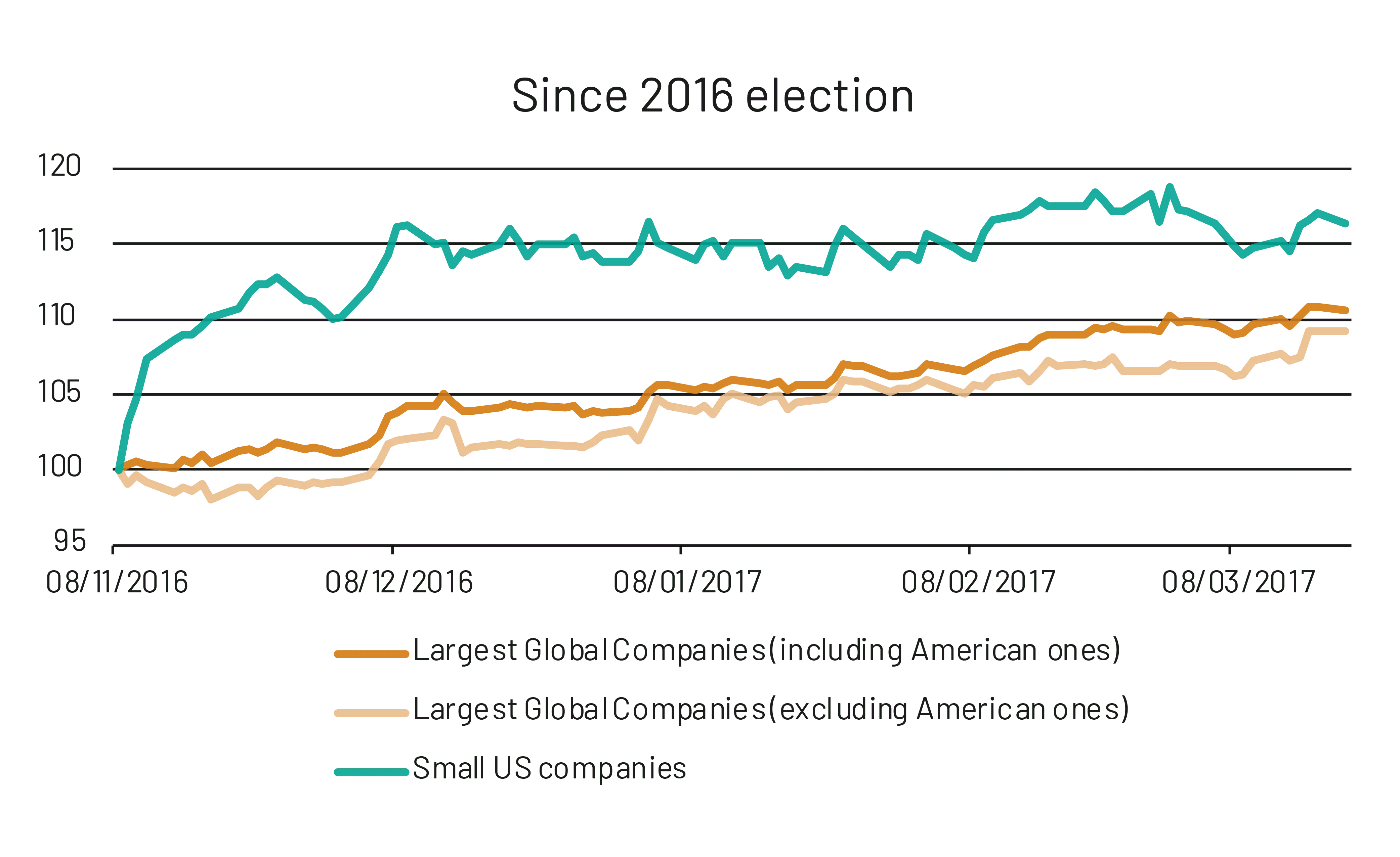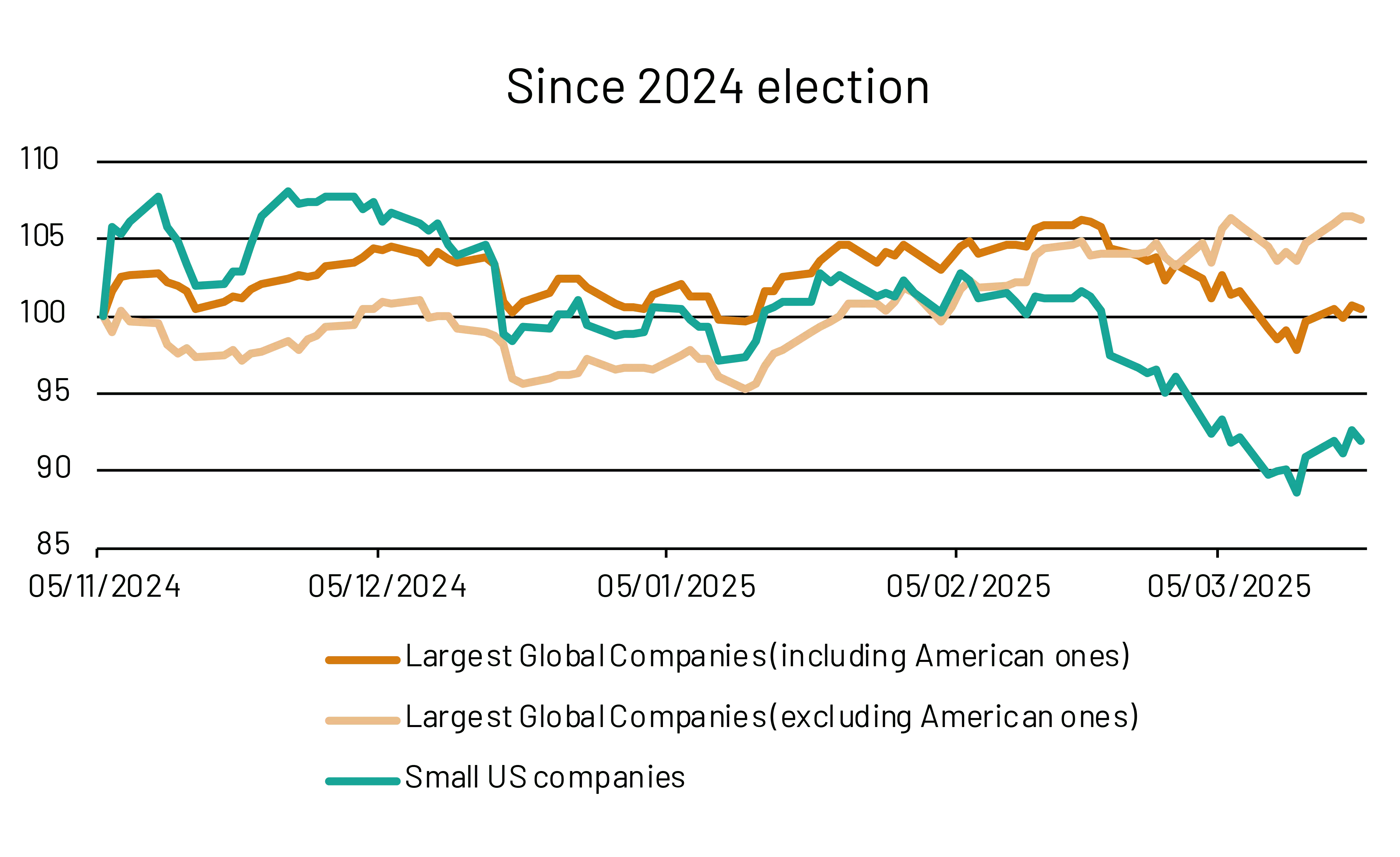
What’s the impact of tariffs? Anyone… anyone?
In the Venn diagram of iconic pop-culture references and important economic history lessons, there aren’t many things in the middle bit. But those of a certain age will know of one – the classic 80s movie Ferris Bueller’s Day Off. In it, Ferris decides to bunk off school (play hooky if you’re American).
This class, on tariffs in the 1930s, was the final straw:
“In 1930, the Republican controlled House of Representatives, in an effort to alleviate the effect of the...
… Anyone… anyone?
the Great Depression, passed the…
… Anyone… anyone?
the tariff bill, the Hawley-Smoot Tariff Act, which…
… Anyone… raised or lowered? Anyone?
Raised tariffs in an effort to collect more revenue for the federal government.
Did it work…?
… Anyone… anyone?
It did NOT work, and the United States sank deeper into the Great Depression.”
A lecture delivered by a nasally, anodyne, monotone professor, to a classroom of bored, tired and uninterested students. The irony, as we’re finding out right now, is that tariffs are far from boring.
A brief history of tariffs
Let’s see if we can do a little better than Ferris’ teacher with the story of tariffs.
In the 1930s, one of the Republican governments campaigns was to protect an old industry – in this case, farming – from insidious global forces who were giving America a bad deal, hollowing out the heartland of the US and benefitting coastal elites… sound familiar?
Two congressmen (Willis Hawley and Reed Smoot) proposed targeted import tariffs on key US-made goods like wool and sugar. Get people to buy American.
But soon, every other industry wanted in on the action. Corn growers from Iowa wanted protection. Orange farmers were demanding their piece. In Ohio, breeding goldfish was big business and the sole (pun unintended!) goldfish-breeding company used its mussel (pun intended!) to demand 35% tariffs on foreign goldfish imports, despite little evidence of any competition.
After all the horse trading, there ended up being over 800 seperate tariffs (with most farmers at the back of queue). And in the complex web of the global trade system, there were inevitably unintended consequences.
Take the US egg industry, which was a net exporter at the time, selling more to the world than it was buying. After the ensuing egg war (sounds fun?) with Canada, America went from selling 1m dozens, down to just 13,000 dozens. Confusing quantities, but that’s a lot of broken dreams if you’re an egg farmer!
Multiply that out across hundreds of goods and it’s easy to see how the Hawley-Smoot tariffs made the Great Depression worse – more uncertainty, lots of unintended consequences, and lots of vested interests.
Trump 1.0 attended their classes
It took decades to untangle the tariffs, the counter tariffs and the counter-counter tariffs. Ultimately, the world even established the World Trade Organisation (WTO) to avoid this happening again.
After the Great Depression, Congress handed over tariff-making power to the President. Best to have it with one person, rather than hundreds of interests at work in the House and Senate. And Presidents took it seriously – so much so, that you could win any debate about trade by invoking Hawley-Smoot.
In the early 90s when Al Gore and Ross Perot were debating the merits of North Atlantic Free Trade Agreement (NAFTA), Al Gore won the live TV debate by simply taking out a picture of Hawley and Smoot. Shows the importance of preparation!
First time around, Trump seemed to get the message. When it came to tariffs on China between 2016-2018, they were measured, predictable and well-flagged. Steel, aluminium and a couple of other specific goods. The goldfish lobby didn’t get a look in.
And it meant the Chinese response was precise and considered. Some prices went up, some companies felt the pain, but the overall impact was minimal – growth was steady, inflation was under control, while interest rates were still supporting the economy.
On the surface, Trump could claim success. The share of imports coming from China had fallen from 22% all the way back to about 14%, back to the same level as the early 2000s (around the time China’s economy really started growing). All the while, growth was humming along and the stock market was booming.
However, behind the scenes, nothing changed. China’s share of global exports remained the same as ever, while the total amount of US imports from the world, remained steady. How is this so?
Basically, detours. As Federal Reserve economists found https://www.federalreserve.gov/econres/notes/feds-notes/global-trade-patterns-in-thewake-of-the-2018-2019-u-s-china-tariffhikes-20240412.html, the tariffed goods were just rerouted. Chinese solar panels came in via Thailand, Chinese washing machines via Mexico, Chinese steel via Europe.
Trump 1.0 – or the people advising him – knew about Hawley-Smoot.
Trump 2.0 played hooky
It’s not quite so clear that the people in charge today attended the same class, though.
The lessons of Hawley and Smoot appear to be forgotten. There’s a tit-for-tat tariff war with Mexico and Canada, tariffs on the EU in the pipeline and even a suggestion for an all-encompassing 20% tariff on all imports. It’s all chaotic. You tax my steel so I’ll tax your wine so you’ll tax my whiskey so I’ll tax your cars so etc..
Even if this round is still about headlines, escalating a trade war can have unintended consequences. Who will be today’s egg producers?
We can already see the market sifting through the winners and losers (see “Unintended consequences” section overleaf).
Trump 1.0 came alongside the kind of market returns that the President was hoping to see. US companies (small and large) taking a larger share of the pie than the rest of the world. MAGA.
Trump 2.0, on the other hand, has seen the opposite impact. Chinese and European stocks are surging on the back stronger fiscal spending while US tech stocks and smaller domestic companies are falling. MEEGA (Make Everyone Else Great Again). The beneficiaries have been the opposite of what Trump intended.
As investors, 7IM often benefits from things not going to plan. We hold a wide spread of investment strategies precisely because of unintended consequences – the global system is too complicated to consistently predict for any length of time and can change quickly. So, at the moment, our allocation to US equal weight rather than concentrated large-tech exposure, our allocation to government bonds, and to non-US markets are all looking very sensible.
No one knows what will happen next. Maybe the tariffs and other policies continue and intensify. Maybe they are completely reversed. Anything is possible. So, we should still prepare for unintended consequences. Portfolio diversification…Anyone… anyone?
Unintended consequences
Almost a full five months after the election, markets aren’t quite going to plan for the US administration. Sudden changes to government spending, immigration and tariffs are impacting US companies, particularly the smallest ones. This contrasts with the same period for the 2016 election – US companies had a strong tailwind from the certainty that the administration wanted to help the smallest companies.


Source: Bloomberg Finance L.P.
More from 7IM



I confirm that I am a Financial Adviser, Solicitor or Accountant and authorised to conduct investment business.
If you do not meet this criteria then you must leave the website or select an appropriate audience.

